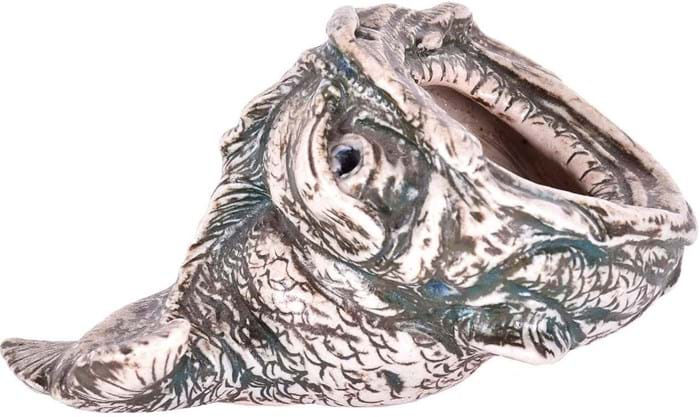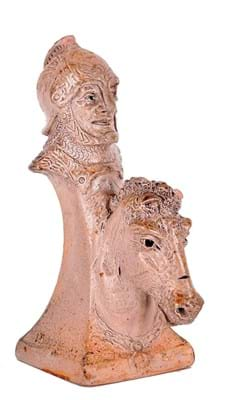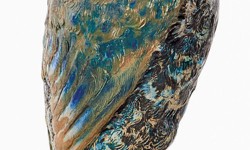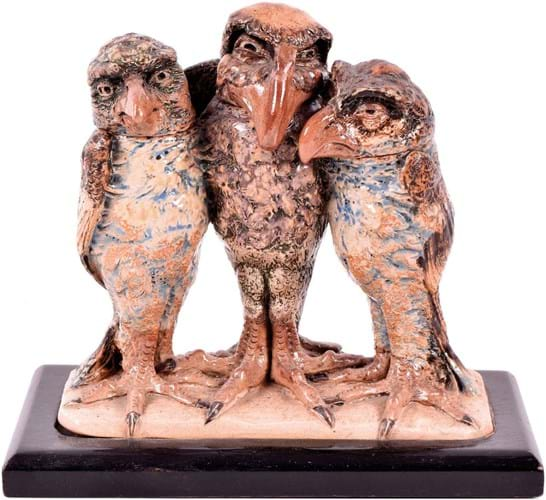
The buying pyramid
There has been no shortage of single-owner collections of Martinware coming up for auction on either side of the Atlantic recently (and with more to come later this month) so plenty of choice is available.
With the market softer than it was a few years ago, this can present challenges and opportunities for vendors and purchases. As ever, it all depends on such factors as rarity, how soon a piece is returning to market and how much the piece is expected to make.
Michael Jeffery, decorative arts specialist at Woolley & Wallis, who has seen a lot of Martinware pass through his hands, feels that while the market correction may affect certain categories, strong competition remains for the right bits.
And specialist dealer Alison Davey notes that while the buying pyramid is small at the top, it is getting richer in the middle with new collectors coming in. “In the last 12 months I have sold around 20 birds – half to new collectors,” she says.
Avery collection
“My dream is to walk into a house full of Martinware,” Dawson’s ceramics specialist Peter Mason had told a colleague. A week later, his dream came true.
Mason was asked to do a probate valuation in Egham, Surrey, by vendors who could remember from their childhood that some Martinware was in the property but were not sure of its extent or value.
What he found was a market-fresh collection purchased by an ancestor direct from the potters themselves that since 1971 had been stored away in an attic wrapped in newspaper.
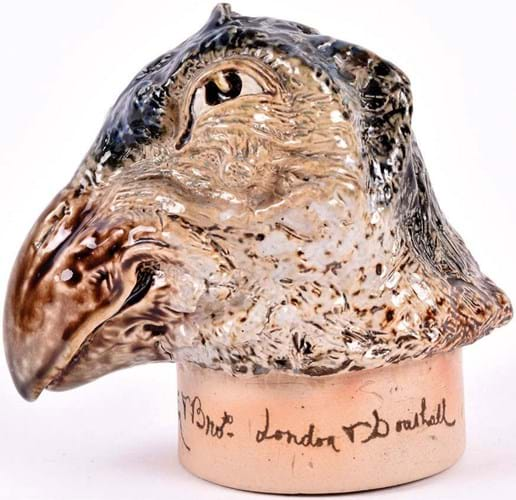
The head only of a Martinware bird jar incised around the neck RW Martin & Bros London & Southall and dated 10-1891. It sold for £2400 at Dawson’s sale of a Martinware collection.
The cache had been purchased by Samuel LM Avery, a master builder and acquaintance of the Martins who lived near their Southall Pottery and often visited it to buy pieces of their work.
It was the recent death of Avery’s daughter that brought the ensemble to light.
What Avery had acquired was a representative group of the Martin Brothers products ranging from one of the famous and desirable Wally bird groups to a run of face jugs, vases and receptacles decorated with a range of aquatic motifs, plus figures, grotesques and some of Robert Wallace Martin’s architectural elements.
Attractive estimates
Offered as a 48-lot section in Dawson’s (23% buyer’s premium) September 21 sale in Maidenhead, it attracted a mix of trade and private collectors with all the lots finding buyers for a premium-inclusive total of £150,000. As a probate collection and with some damage to the pieces, estimates had been pitched very attractively which no doubt helped to boost demand.
The top lot of the day was the collection’s triple-bird group. Mounted on an ebonised wooden base, the three embracing avian characters with detachable heads measured approximately 7 x 7in (18 x 18cm). Both the base and the three heads were dated 1904.
The group was purchased at £32,000 by the specialist 19th and 20th century decorative arts dealer Sinai & Sons. Talking afterwards, the firm’s Raphael Sinai explained why he rated this particular triple-bird group so highly. “In our opinion, we believe it to be the best of the best,” he said.
The date of 1904 makes it the earliest-known recorded triple-bird group. Sinai singled out the quality of the execution, the modelling and the glaze, and the ‘caricature’ faces of the birds. But he also added that a key feature of this collection was that Samuel Avery had created the wooden bases for much of the Martinware.
“This direct link between Mr Avery and the Martin Brothers is what makes this provenance so important,” said Sinai.
Avery must have been very taken by the brothers’ trademark rotund mask jugs: with 10 examples to offer, this was by far the largest category in the collection.
Relatively speaking, quite a large supply of Martinware has appeared on the market recently, so faced with this much in one sale, buyers could be selective.
There were no flying results for the jugs but, aided by those modest estimates, they all got away at prices ranging from £2100-3800. Two examples realised that highest figure.
One was a classic double-sided version measuring 9in (23cm) dated to c.1900, against predictions of £4000-6000. The other was slightly smaller, dated 19-1-1912, moulded to just one side with a smiling face and finished in a very dark brown glaze. It had been guided at £1000-1500.
Some of the strongest bidding came for the smaller pieces such as the spoon warmer modelled as open-mouthed, fishy grotesque marked R.W. Martin Brothers Southall, 9-1915 and measuring 4¼ x 2½in (11 x 6.5cm), which at £6000 made far in excess of its modest £800-1200 guide.
Another was the lot containing two chess pieces modelled as a knight, one 4in (10cm) high and dated 1-3-1904, the other slightly taller with an indistinct date. Relatively rare in the Martinware oeuvre, these outpaced the guide of £1000-1500 to take £5500.
Opportunities came for slimmer wallets, such as a matched group of seven Martin brothers’ eggcups with inscribed marks to the base for 1909/10 which sold for £600, or a typical gourd-shaped ribbed vase 4in (10cm) high by Edward and Walter Martin dated 5-1911 which went for £700.
Read ATG's collecting guide for more information on Martin Brothers pottery


